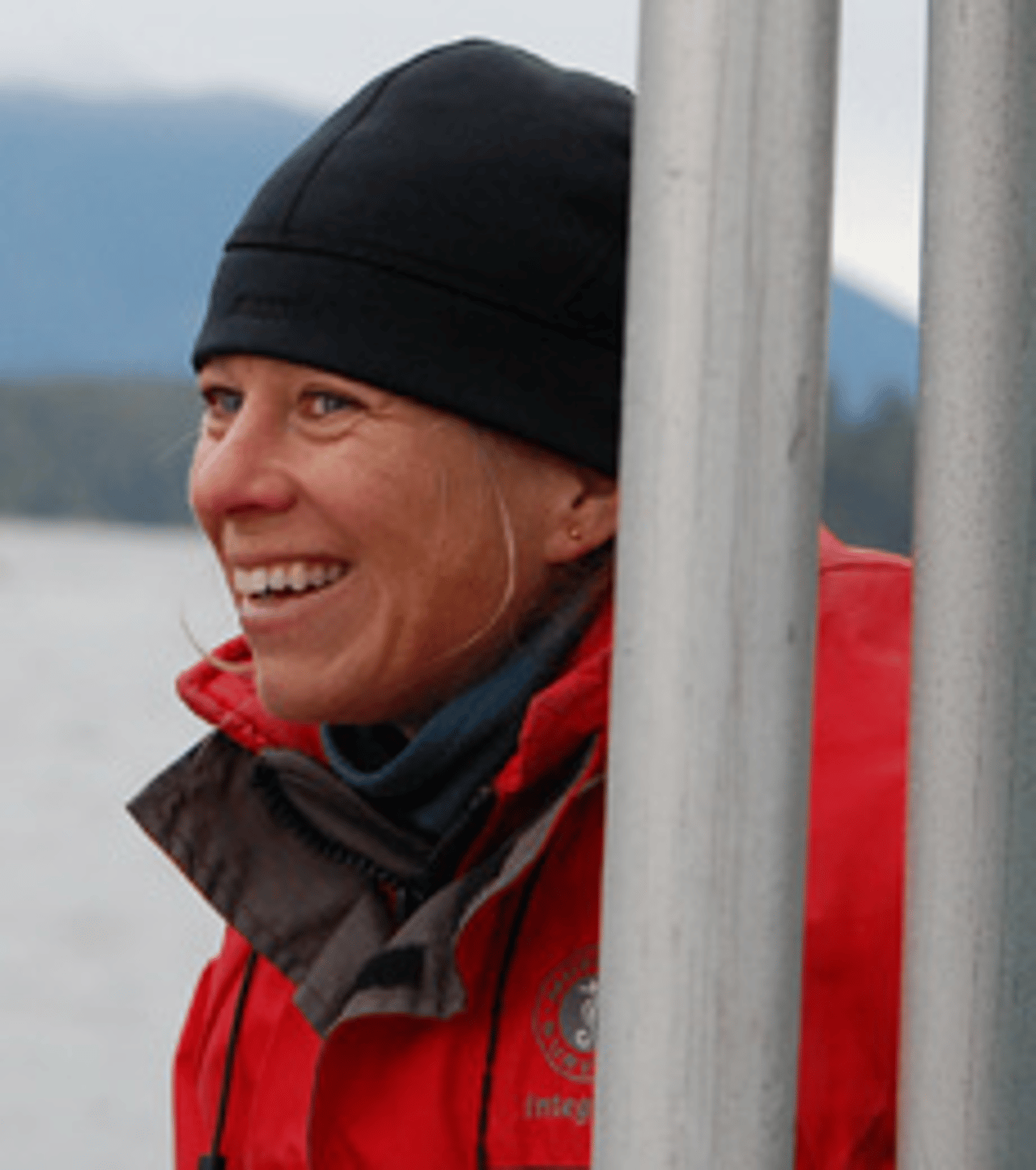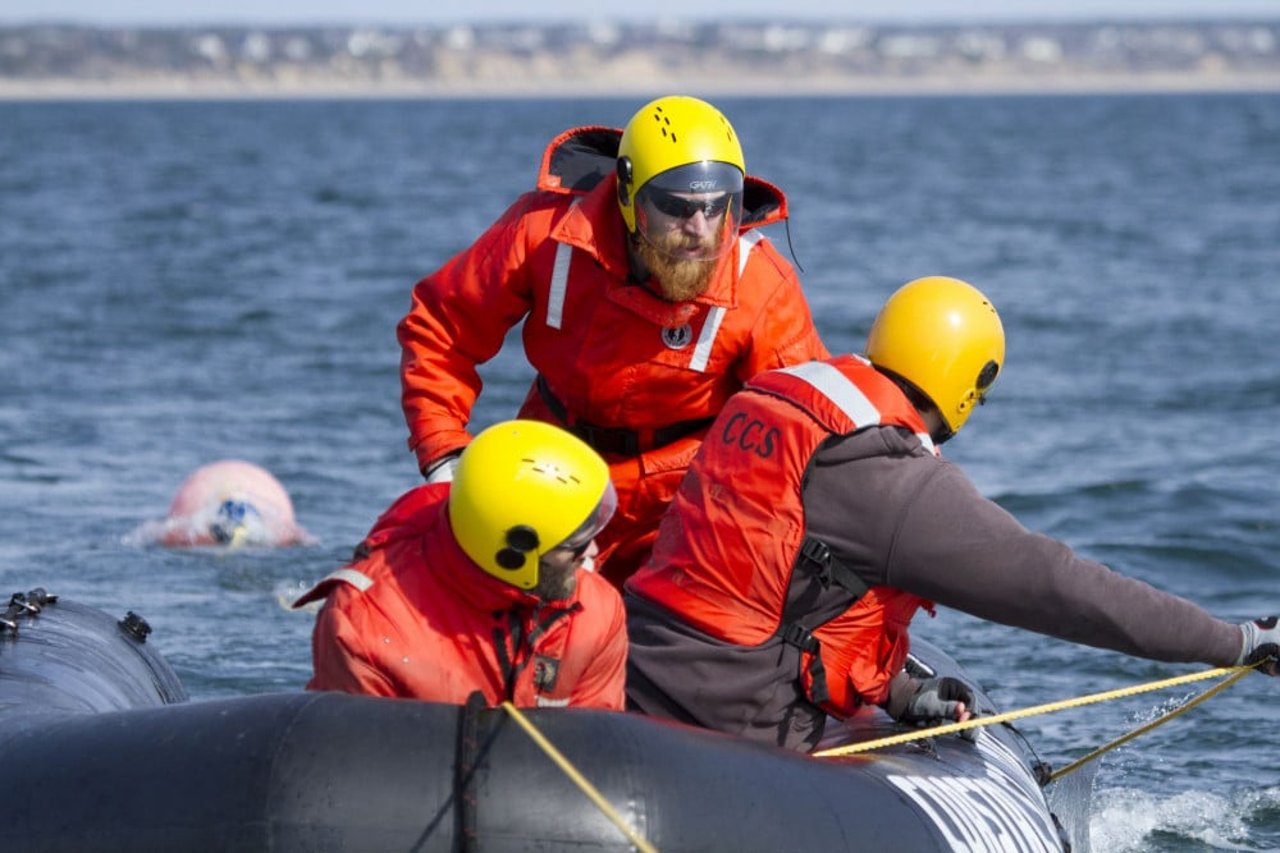
Four questions with a pinniped disentanglement expert in British Columbia
News
Rescuing entangled pinnipeds (seals and sea lions) is important to reduce the immense suffering and premature deaths caused by marine debris such as packing bands and lost fishing gear.
Wendy Szaniszlo is a marine mammal biologist with over 14 years of experience conducting research and monitoring marine mammals with government agencies, universities and research groups across Canada. Her most current focus includes the development of disentanglement techniques and protocols. She recently facilitated our Pinniped Disentanglement Workshop at the Society for Marine Mammalogy conference, held in Halifax, Nova Scotia this past October.
Wendy Szaniszlo.
With entanglements being featured in the news more frequently, we asked Wendy if she could answer some questions about the causes of animal entanglement and how rescuers operate.
What are the primary sources of marine animal entanglements in BC?
Off southwest Vancouver Island, BC most sea lion entanglements (38%) were in plastic packing bands. Some (5%) were in rubber bands used in crab traps. Unfortunately, 45% of entanglements were so severe that the material could not be seen to be identified. Many sea lions (10%) also had fishing lures (primarily salmon flashers) hooked in their mouths.
Why is it important that we rescue marine animals that become entangled?
When marine mammals suffer as a direct result of human activity (i.e. are entangled in marine debris such as fishing gear), I feel there is a responsibility to respond and rescue them.
In Canada, Steller sea lions are listed as a Species of Special Concern under the federal Species at Risk Act. Prevention of entanglements and rescues will contribute to the recovery of the species.
What are the ingredients for a good rescue?
The key components of a disentanglement response include the following:
- Program policies and procedures
- Response plans and rescue coordination
- Liability and safety
- Communications – before, during and after rescues and;
- Personnel roles and responsibilities
When considering a sea lion disentanglement response in Canada, it’s important to first have approval by the Department of Fisheries and Oceans (DFO). Knowledge of the entangled animal’s location is critical to ensure that a response is feasible. Not all sites can be safely accessed. Other key requirements are available trained personnel, and having the equipment and vessels needed for the rescue.
Both personnel and animal safety are critical to every rescue. This includes wearing personal protective equipment such as flotation and gloves, using insured vessels, and having criteria for when it is safe to remotely dart a sea lion.
In BC, a rescue team usually comprises of two vessel operators, one vet and one vet technician in the approach vessel, two vet technicians in the support vessel, and one observer/rescue coordinator/photographer in approach vessel. A videographer sometimes accompanies the team to document the rescue. Each person plays an important role in the rescue and has specific responsibilities. Everyone shares the responsibility for communicating in a rescue and looking for the target animal if a darted sea lion goes in the water. A debrief with the team is valuable after a rescue to identify what went well and to address what could be improved in the future.
It’s important to consider the key components of a rescue to ensure a safe and successful sea lion disentanglement. Rescues are dangerous; specialized skills, experience, equipment and sedatives are needed.
What can the people do to help?
If you see an entangled seal or sea lion in BC, or one with ingested fishing gear, please report it. Call the Vancouver Aquarium's Marine Mammal Rescue Centre at 604 258 SEAL (7325) or Fisheries and Oceans Canada at 1 800 465 4336.
Click here for a list of numbers across Canada to report a marine animal in distress
Why report entanglements?
- It may be possible to have trained professionals rescue the animal.
- The data is important to understand the type of material involved in entanglements. If we can identify the materials, we can work towards preventing entanglements.
Everyone can help prevent entanglements. You can ‘lose the loop’ – cut all plastic/rubber loops (such as plastic packing bands), and by participating in shoreline clean ups.
Sea Change for safer waters
Our Sea Change campaign reduces the huge suffering caused by ghost fishing gear, one of the deadliest forms of marine debris.
Marine Animal Rescue Society (MARS) crew Andrew, Jarrett and Tonya are hard at work, learning how to disentangle whales on Canada’s east coast. World Animal Protection is helping members of the MARS receive disentanglement training.
Supporting disentanglement efforts and reducing the amount of ghost fishing gear is part of our work to reduce suffering and protect sea animals.
Learn more about our Sea Change campaign >
Top image was taken by and belongs to Wendy Szaniszlo.
When marine mammals suffer as a direct result of human activity (i.e. are entangled in marine debris such as fishing gear), I feel there is a responsibility to respond and rescue them.

